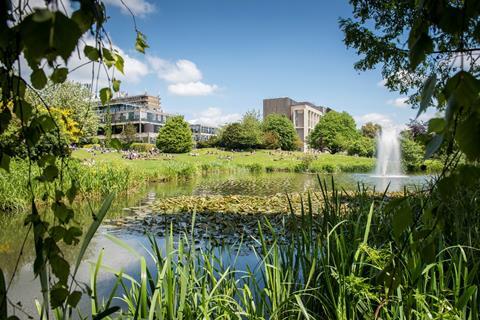
Student housing and life sciences are two ‘alternative’ sectors of real estate. The former is the more established institutional asset class and a major component of today’s increasingly amorphous residential markets, which in recent years have been renamed collectively as the ‘living’ sector to reflect this.
Life-science real estate, meanwhile, has emerged in recent years as one of the biggest growth markets and was especially boosted by the COVID-19 pandemic. As a form of commercial space, it is closer in nature to the office sector but crucially distinct. The traditional office is undergoing widespread structural decline – a trend also caused or, more accurately, accelerated by COVID-19. But life-science real estate is experiencing the opposite – structural growth relating to ageing populations and the expansion of life sciences and technological innovation.

But student housing and life-science real estate are also connected – arguably, they form part of the same ecosystem of innovation. University towns tend to be hubs of innovation, which can be important for a country’s overall economy and global standing. It is no surprise then, that the life-science real estate market in the UK is dominated by the ‘golden triangle’ of Oxford, Cambridge and London, which are home to some of the top 10 universities globally.
But universities need good quality and sufficient provision of accommodation for their undergraduates. They also want to encourage talented graduates to stay around. Last year, Bill Hughes, head of real assets at Legal & General Investment Management told IPE Real Assets, that Oxford University is very focused on offering high-quality accommodation for students, post-graduates and “entrepreneurs who stay in the area” – as part of efforts to increase its retention rate. “It’s all very well having high-calibre students, but if they all disappear off into the ether that’s not the best,” Hughes said.

In this edition, we provide global reports on student accommodation and life-science real estate, exploring the latest trends in the US and UK (which are home to arguably the most mature institutional-grade markets in the world), continental Europe and Asia-Pacific.
The main takeaway is consistent throughout: widespread acute supply-demand imbalance in student housing and life sciences across the globe means there are huge opportunites in both sectors.
But they come with challenges. For instance, they are specialist, operational-heavy assets. They are very much tied to locations and micro-locations – to a greater degree, perhaps, than some other real estate sectors. Performance can therefore vary significantly geographically, and investors need to be careful not to blindly ‘build more’ space.
Regulatory and political risks are very real and seem to be on the rise – whether in the form of potential rental controls for student housing, or changes that can affect the life-sciences industry that underpin the real estate market serving it.
The UK is certainly vying to position itself as the leading global centre for life sciences, taking advantage of the growing critical mass of the golden triangle. In February 2023, the government established the Department of Science Innovation and Technology and published its ‘Life Sci for Growth’ strategy – a 10-point plan with ambitions to make the UK a ‘science superpower’ by 2030. Included in this was a £650m (€759m) package to support the life-sciences sector.
Late last year, British Land and Savills launched a joint report, Accelerating Innovation: A five-point plan to boost life sciences real estate, highlighting a severe shortage of real estate space to accommodate both current and predicted demand, with vacancy rates for fitted laboratory space of just 1% in Cambridge and London and 7% in Oxford.
The report argued that if the life-sciences markets within the golden triangle matched the growth seen in leading markets in the US, by 2035 it would generate 67,000 more jobs, £4bn in additional GVA per year and an extra £1.1bn per year in tax revenue to fund public services.
A general election is expected in the UK this year and polls predict a change of government. The Labour Party, currently in opposition, has outlined multiple proposals for the life sciences, including the establishment of a regulatory innovation office to hold regulators accountable for delays in bringing innovations to Britain, and measures to use patient data within the National Health Service more effectively, and creating a single access point for researchers.
“Policy which builds on the supportive work of the previous political administration is crucial, and seemingly Labour plans to do just that,” said Emma Goodford, head of life sciences and innovation at Knight Frank. “But, crucially, the industry also needs more capability in venture funding, which is driving so much of the sector’s early-stage innovation. As this grows, the UK must aim to retain it for its potential economic and health value. It struggles to do this at the moment and US venture and private equity dominates.”























